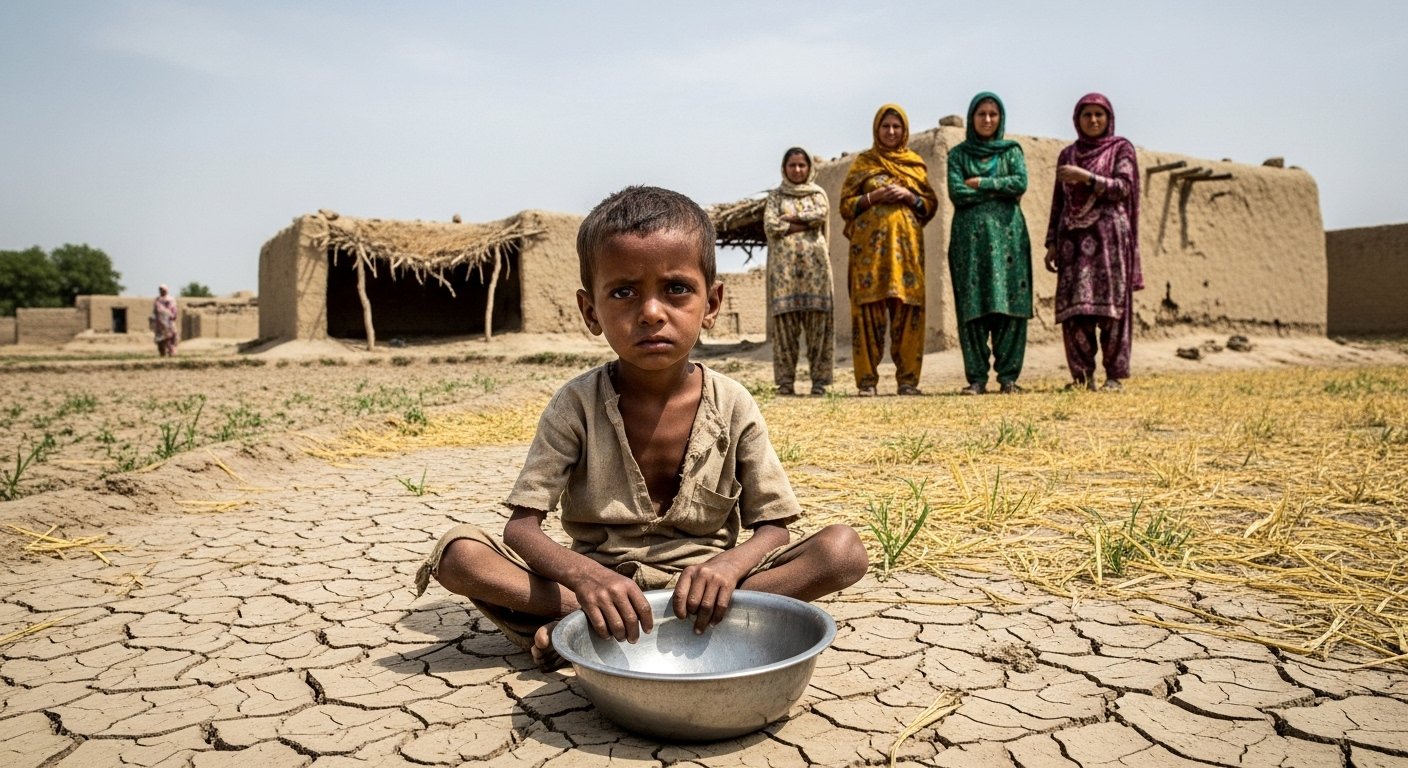From Potential to Prosperity: Tackling Malnutrition in Pakistan
Based on the article by Saskia de Pee & Nazeer Ahmed, published in Dawn on September 10, 2025
Introduction: Why Nutrition Matters for National Development
Nutrition is not only a health issue—it is a national development and economic growth issue. Global research proves that every $1 invested in early-life nutrition during the critical first 1,000 days (from conception to age two) generates up to $23 in returns. These returns appear in the form of healthier, more productive adults, reduced healthcare costs, and stronger human capital.
In contrast, the cost of inaction is enormous. The world stands to lose an estimated $41 trillion over the next decade due to the consequences of malnutrition. For Pakistan, a country already struggling with poverty, climate change, and underinvestment in human development, this is a crisis it cannot afford to ignore.
The Malnutrition Crisis in Pakistan
Child Stunting and Maternal Malnutrition
-
40 percent of children under five in Pakistan are stunted, reflecting long-term undernutrition.
-
Among the poorest households, this rises to 50 percent.
-
Malnutrition contributes to nearly half of all child deaths under five and one in five maternal deaths.
Stunting has devastating, lifelong consequences. It impairs brain development, reduces learning capacity, and leads to lower earning potential in adulthood. Once established, its effects are largely irreversible.
Climate Change as a Threat Multiplier
Pakistan’s vulnerability to climate change makes the challenge worse. The 2022 floods destroyed crops, displaced millions, and disrupted access to healthcare and clean water. Such shocks disproportionately affect women and children, worsening the risk of malnutrition and food insecurity.
The Affordability Crisis: Why Families Cannot Access Nutritious Food
Data from the Pakistan Bureau of Statistics (2024) highlights a stark reality:
-
73–87 percent of households across provinces cannot afford a nutritious diet.
-
Nutritious diets are 1.5 to 1.7 times more expensive than what families currently spend on food.
Most Pakistani diets remain cereal-heavy, lacking protein, dairy, fruits, and vegetables. These nutrient gaps lock families into a cycle of poor health, low productivity, and poverty.
Image suggestion: A chart showing the rising cost of a nutritious diet versus household food spending.
Solutions that Work: The Benazir Nashonuma Programmed
The Benazir Nashonuma Programme offers a practical, evidence-based model to address malnutrition. It provides:
-
Cash transfers to improve household purchasing power.
-
Nutrition counselling to promote breastfeeding, complementary feeding, and maternal care.
-
Specialized nutritious foods:
-
“Maamta” for mothers.
-
“Wawamum” for children, a nutrient-rich paste of chickpeas, milk powder, oil, and vitamins.
-
These interventions do not replace meals but fill critical nutritional gaps, especially in poor households where diets are cereal-dominated.
Early Results and Policy Implications
Independent evaluations of Nashonuma show:
-
Improved maternal health outcomes.
-
Better child growth indicators.
-
Increased awareness about nutrition and feeding practices.
The success of Nashonuma proves that scaling up integrated nutrition programmes can make a measurable difference. However, sustainability requires political commitment, long-term funding, and alignment with broader national policies such as disaster response, healthcare strengthening, and poverty reduction strategies.
Moving Forward: From Potential to Prosperity
For Pakistan to transform its demographic potential into prosperity, nutrition must become a central policy priority.
Key recommendations include:
-
Scale up nutrition programmes like Nashonuma nationwide.
-
Integrate nutrition into climate resilience strategies to protect vulnerable families during disasters.
-
Strengthen social protection systems to make nutritious food affordable.
-
Promote public-private partnerships for food fortification and local production of nutrient-rich foods.
-
Embed nutrition in the Sustainable Development Goals (SDGs) agenda, ensuring accountability and measurable progress.
Call to Action
Malnutrition is not an inevitable reality. It is a challenge that can be overcome through evidence-based policies, political will, and sustained investment. For Pakistan, prioritizing nutrition during the first 1,000 days is both a moral obligation and an economic necessity.
If Pakistan truly seeks to move from potential to prosperity, ensuring every child has access to adequate nutrition must be at the heart of its development strategy.
Vocabulary Builder
| Word | Meaning | Synonym | Antonym | Usage in Sentence |
|---|---|---|---|---|
| Stunting | Impaired growth due to chronic malnutrition | Growth failure | Healthy growth | Stunting affects 40% of Pakistani children under five. |
| Intervention | A planned measure to address a problem | Initiative, action | Neglect, inaction | The Nashonuma programme is a vital intervention against malnutrition. |
| Resilience | Capacity to recover quickly from difficulties | Endurance, toughness | Fragility, weakness | Communities displayed resilience after the floods. |
| Nutrient | A substance required for health and growth | Vitamin, element | Toxin, waste | The supplement provides essential nutrients to children. |
| Affordability | Being financially within reach | Cost-effectiveness | Expensiveness | The affordability of healthy food remains a challenge for many families. |
| Prosperity | A state of success and wealth | Progress, well-being | Poverty, decline | Nutrition investment is essential for Pakistan’s long-term prosperity. |


